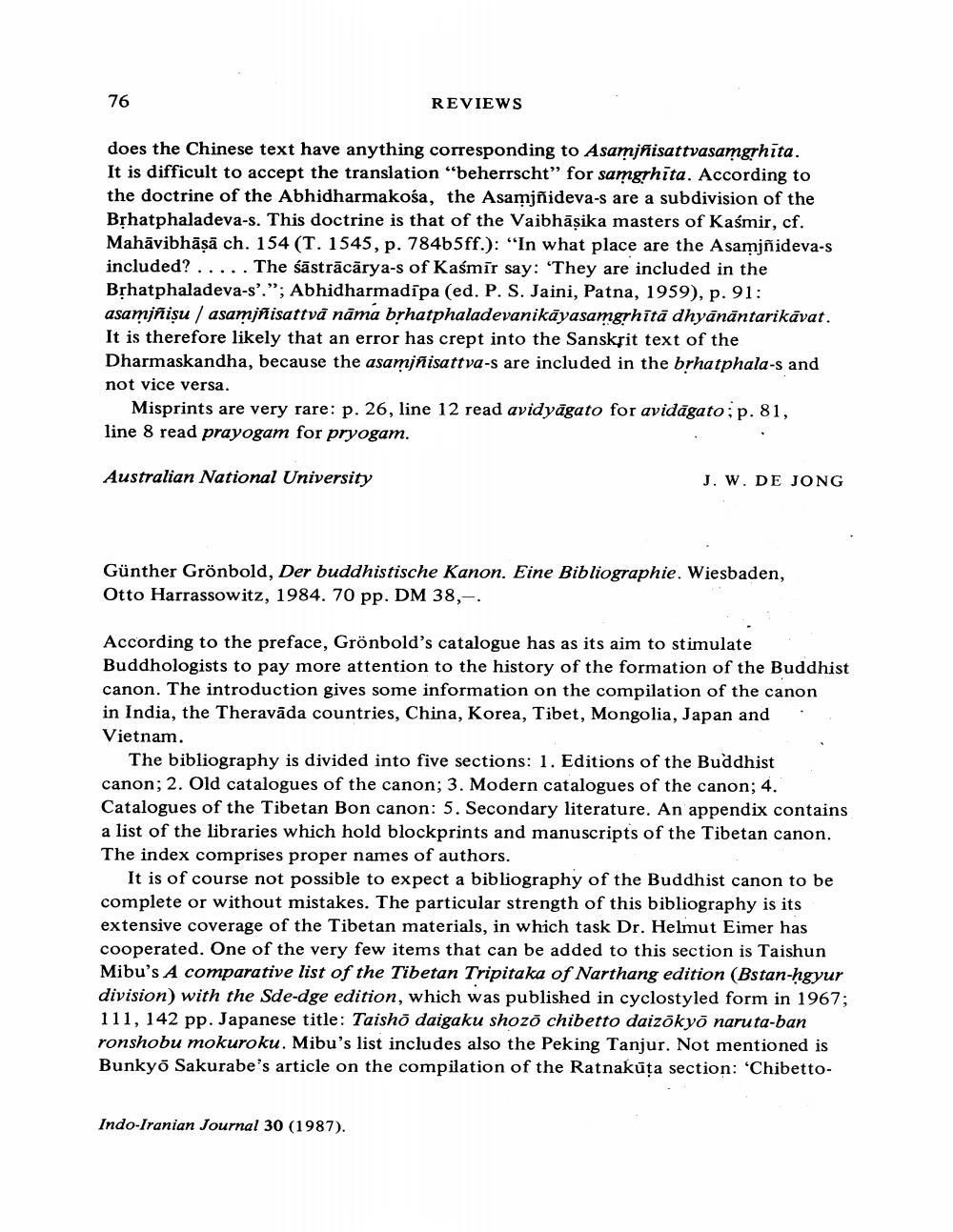________________
76
REVIEWS
does the Chinese text have anything corresponding to Asamjhisattvasamgrhīta. It is difficult to accept the translation "beherrscht" for samgrhita. According to the doctrine of the Abhidharmakośa, the Asamjñideva-s are a subdivision of the Bịhatphaladeva-s. This doctrine is that of the Vaibhāșika masters of Kaśmir, cf. Mahāvibhāsä сh. 154 (T. 1545, p. 784b5ff.): "In what place are the Asamjñideva-s included? ..... The śāstrācārya-s of Kaśmir say: 'They are included in the Bịhatphaladeva-s'."; Abhidharmadīpa (ed. P. S. Jaini, Patna, 1959), p. 91: asamjñișu / asamjñisattvå nāma brhatphaladevanikāyasamgrhītā dhyānāntarikāvat. It is therefore likely that an error has crept into the Sanskrit text of the Dharmaskandha, because the asamjñisattva-s are included in the brhatphala-s and not vice versa.
Misprints are very rare: p. 26, line 12 read avidyāgato for avidāgato; p. 81, line 8 read prayogam for pryogam.
Australian National University
J. W. DE JONG
Günther Grönbold, Der buddhistische Kanon. Eine Bibliographie. Wiesbaden, Otto Harrassowitz, 1984. 70 pp. DM 38,-.
According to the preface, Grönbold's catalogue has as its aim to stimulate Buddhologists to pay more attention to the history of the formation of the Buddhist canon. The introduction gives some information on the compilation of the canon in India, the Theravāda countries, China, Korea, Tibet, Mongolia, Japan and . . Vietnam.
The bibliography is divided into five sections: 1. Editions of the Buddhist canon; 2. Old catalogues of the canon; 3. Modern catalogues of the canon; 4. Catalogues of the Tibetan Bon canon: 5. Secondary literature. An appendix contains a list of the libraries which hold blockprints and manuscripts of the Tibetan canon. The index comprises proper names of authors.
It is of course not possible to expect a bibliography of the Buddhist canon to be complete or without mistakes. The particular strength of this bibliography is its extensive coverage of the Tibetan materials, in which task Dr. Helmut Eimer has cooperated. One of the very few items that can be added to this section is Taishun Mibu's A comparative list of the Tibetan Tripitaka of Narthang edition (Bstan-hgyur division) with the Sde-dge edition, which was published in cyclostyled form in 1967; 111, 142 pp. Japanese title: Taisho daigaku shozó chibetto daizőkyo naruta-ban ronshobu mokuroku. Mibu's list includes also the Peking Tanjur. Not mentioned is Bunkyo Sakurabe's article on the compilation of the Ratnaküța section: 'Chibetto
Indo-Iranian Journal 30 (1987).




